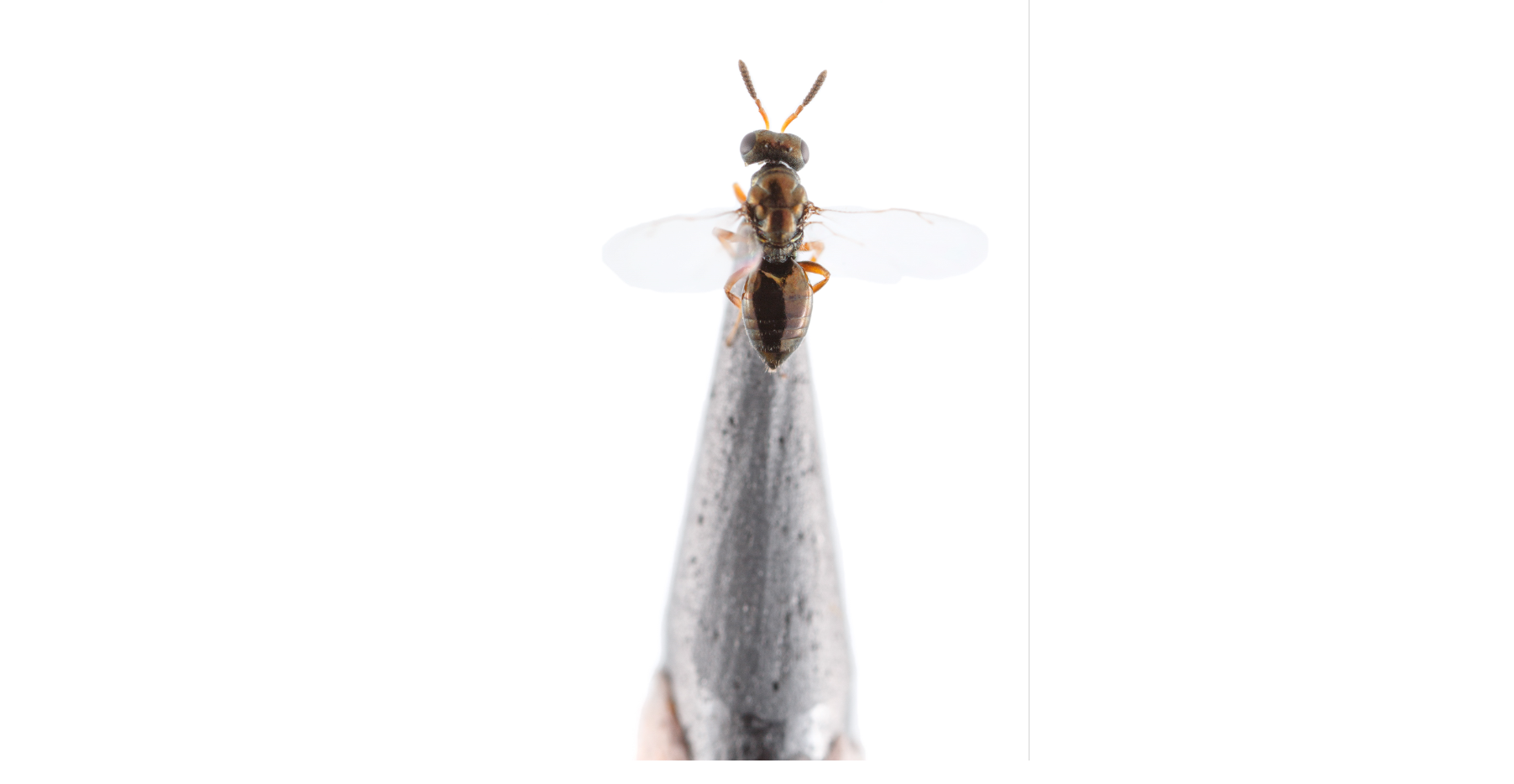Parasitic wasps do without sex chromosomes. So how do sex differences come about? Molecular biologist Eveline Verhulst has solved this riddle. And that earned her a publication in Science.
Parasitic wasps are pretty unsightly creatures. The same goes for Nasonia vitripennis, the bug that Eveline Verhulst has been working on for her whole academic career. The wasp is no more than a couple of millimetres long, too small to see properly with the naked eye. It serves a useful purpose as a form of biological pest control in livestock farming, and as a parasite on the pupae of the stable fly.
In the case of many insects in the Hymenoptera order, we know that a female comes out of one egg cell and a male out of another. But the standard model does not apply to the Nasonia genus. ‘So I set to work on that,’ says Verhulst. That was back when she was a PhD student (graduating cum laude) and a postdoc at Evolutionary Genetics in Groningen. She came to Wageningen seven years ago with an NWO Veni grant in the bag.
The Nasonia genus is haplodiploid. The male (haploid) has a single specimen of each chromosome on board, coming from the mother. The female (diploid) has two of each chromosome, one from the father and one from the mother. If the female does not mate, then the egg cell will automatically produce a male. If fertilization does take place, then a female will develop. In both cases, the gene with the appealing name doublesex plays a key role in sex development. The gene ensures that a chain of reactions is set off that lead to a male or a female.
Game
So doublesex literally plays a dual role. But how does the gene know which sex is wanted? ‘We knew there was a gene in play that is responsible for this signal,’ says Verhulst. ‘But we didn’t know which gene.’ In an article in PLoSOne in 2013, Verhulst and her team called this gene wom, short for womanizer (see inset).
Together with her Groningen team, Verhulst found wom by comparing the activity of genes in the young embryos of males, females and gynandromorphs (genetically male, female in appearance). ‘Then you look at the difference in gene expression: which gene is switched on in the one and not on the other. That often produces a long list of differences. But we were lucky because the list was very short.’
The female decides whether fertilization takes place
The search led to the identification of wom, the gene that eventually steers doublesex towards developing a female. Eventually, because the whole process is complex and requires a number of steps. Wom does not influence the process directly but through another gene (tra, short for transformer, see illustration). And it gets a bit more complex than that, even: both sexes have wom on board, but the one that comes from the mother is inactive. That makes fertilization essential: only the male wom stimulates the development of females.
Females in charge
So a male is needed to make females. But anyone who sees male dominance in that is on the wrong track. The female parasitic wasps are firmly in charge. Verhulst: ‘During mating, the female stores the sperm. Each time she lays an egg, she then decides whether or not fertilization takes place. Normally, mating produces about 90 per cent females and 10 per cent males. But that ratio can change with the circumstances. If, for example, there are a lot of females nearby, the wasp will make a few more males, so that her sons can mate with the daughters of the other females.’
The identification of wom is a useful step forward. But the story is far from over. Why, for example, is the female wom rendered inactive? Is the male wom already active in the sperm cell or only after fertilization? And how does all this fit into the evolutionary narrative of species formation? ‘The male-or-female thing is so universal,’ says Verhulst, ‘but why is the sequence of events leading to sex determination so complex? It’s different for nearly every species. How did that come about? To find that out, you have to know how it works in as many species as possible. And that’s where we’ve made some progress now.’
Womanizer
Wom originally stood for womanizer.But no longer. On the insistence of Science, it became ‘wasp overruler of masculinization’. Same abbreviation, different overtones. Because that was what it was about, reckons Verhulst. ‘I think that it was related to the Me Too movement. We thought womanizer was appropriate. After all, in the animal kingdom, the males are womanizers. That is the evolutionary strategy. A male wants to mate. And in this case, that is necessary for making females. Feminizerwould have worked too, but that name is already in use.’

 The wom of the mother is inactive. After fertilization, the wom of the father causes the development of a female, through the transformer gene (tra) and doublesex (not shown). Without that signal, the tra does nothing and doublesex prompts the development of a male. Illustration Eveline C. Verhulst.
The wom of the mother is inactive. After fertilization, the wom of the father causes the development of a female, through the transformer gene (tra) and doublesex (not shown). Without that signal, the tra does nothing and doublesex prompts the development of a male. Illustration Eveline C. Verhulst.